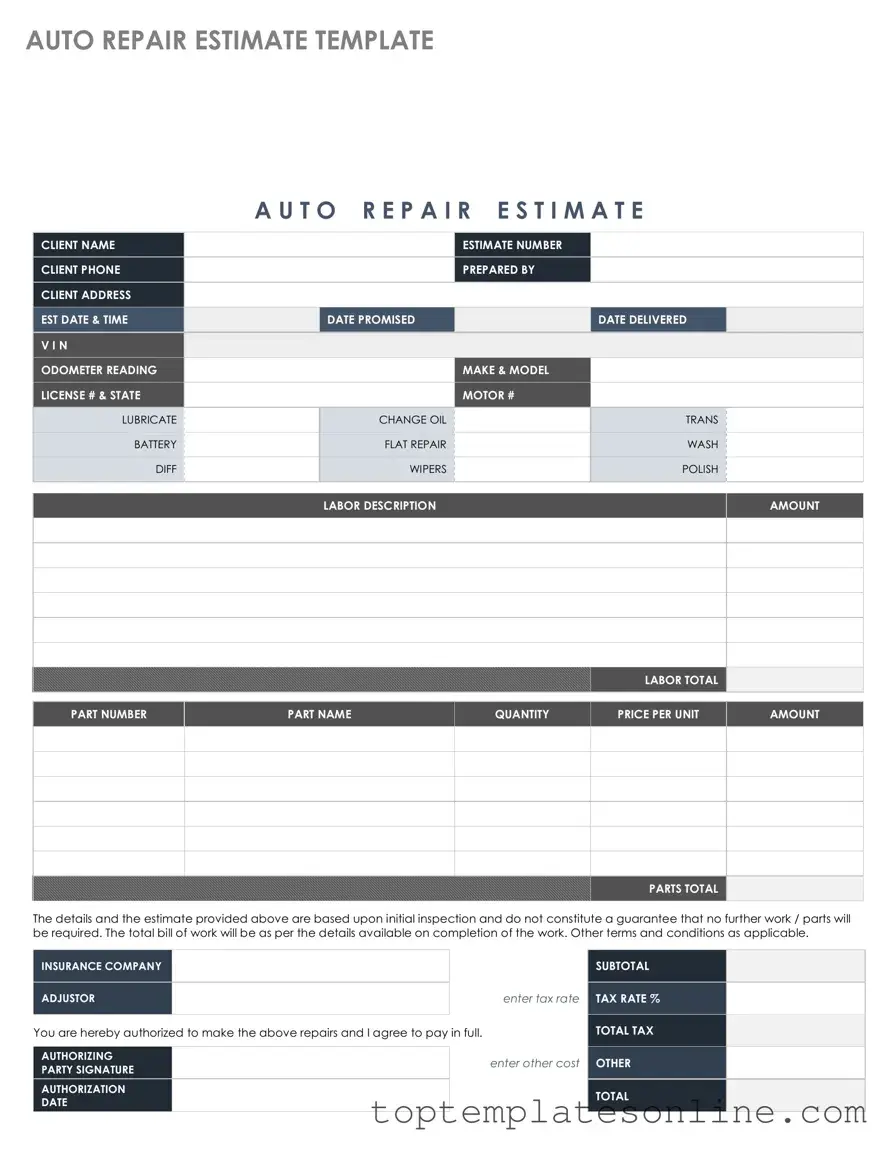Fillable Auto Repair Estimate Form
The Auto Repair Estimate form is a document that outlines the anticipated costs associated with vehicle repairs. This form serves as a crucial tool for both auto repair shops and customers, providing transparency and clarity regarding the services to be performed. By detailing parts, labor, and overall expenses, the form helps facilitate informed decision-making for vehicle owners.
Customize Auto Repair Estimate Here
